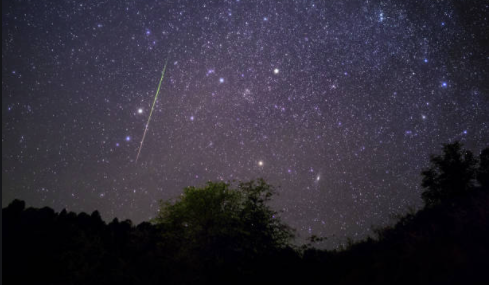The Leonids will line the sky Nov. 16

The Leonid meteors fly through the sky.
November 15, 2021
You are sitting in the dark in an open field freezing and wondering if your efforts are worth it. That is until you see the first shooting star racing across the sky and the lack of feeling in your toes loses importance. The sky always feels so far away until this night. Being close to the stars is a reality. The galaxy is always so unapproachable, how are we to get there or know what’s out there? One of the only nights in a year where one can feel close to the stars is coming.
Tuesday, Nov. 16, 2021, the Leonids will coat the sky. According to usatoday.com, the meteor shower will peak late Nov. 16 into dawn Nov. 17.
“The best time to look is just before dawn Nov. 17 after the moon has set,” reporter Doyle Rice said.
NASA suggested some viewing tips including finding an area without light, being prepared to be cold, and most importantly, facing east while laying on one’s back to see as much of the sky as possible. NASA also recommends patience. They mention that within thirty minutes, one will be able to see the meteors once their eyes fully adjust to the dark.
The shower stems from the constellation Leo the Lion, which gave it its name.
The meteor storm recurs in cycles of 33 to 34 years and typically consists of 10 to 15 meteors per hour.
In 1966, however, the Leonid shower had as many as thousands of meteors per minute in a 15-minute span of time.
“On that beautiful night in 1966, Leonid meteors did, briefly, fall like rain,” science writers from earthsky.org, Brain McClure and Deborah Byrd said.
According to NASA, the Leonids are some of the fastest meteors in existence, traveling at 44 miles per second.
The best time to watch the Leonids is right after midnight or just before dawn if anyone is willing to wake up that early on a Wednesday morning before school or work.
The next meteor shower to look forward to is the Geminids, falling on the evening of Dec. 13 into the morning of the 14th.







